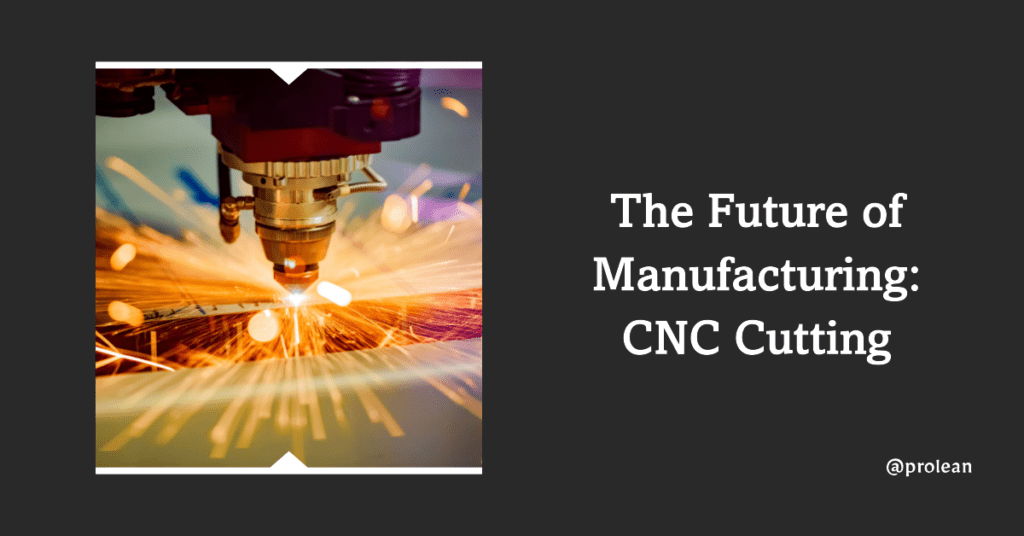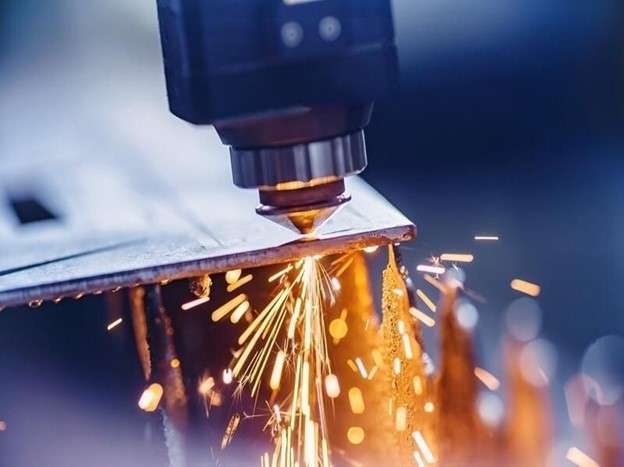
CNC cutting is a sub-process of the manufacturing sector where CNC machines control cutting tools to remove material from a workpiece, eventually shaping it into the desired part or product. These machines follow instructions from a program usually written in G-code, ensuring each cut is precise and every product is consistent.
CNC cutting has also answered the industry’s increasing demand for customization. From custom car parts to personalized home décor, the possibilities are limitless. With the evolution of CAD and CAM software, designs can now be tested virtually, reducing errors and material waste. This guide takes you on a journey through CNC cutting, exploring its types, processes, benefits, and industries of application.
The Basics of CNC Cutting

CNC cutting is the manifestation of advanced technology meeting manufacturing prowess. It is a subtractive manufacturing process where the workpiece, in a block or sheet form, is gradually cut into the desired shape with a high level of precision. This process is computerized, with instructions provided to the cutting machine through coded software programs.
The key features of the CNC cutting process include;
- High Precision: CNC machines follow strict paths defined by computer programs, ensuring high precision.
- Consistency: Once programmed, CNC machines can produce multiple identical parts.
- Versatility: CNC machines can cut a wide variety of materials, from metal to plastic and wood.
- Reduced Waste: Precise cuts mean less waste, increasing material efficiency.
- 24/7 Operation: Unlike manual labor, CNC machines can work continuously, increasing productivity.
CNC Cutting vs. Manual Cutting
CNC cutting stands out because of its remarkable contrast to manual cutting methods. Traditional methods depended heavily on the operator’s skill, and even with a highly experienced operator, discrepancies in the end product were common. CNC cutting, however, removes these inconsistencies. With CNC cutting, once a program is created, the machine can run it repeatedly, producing the same high-quality product every time.
This is not to say that the human element is entirely removed. CNC operators and programmers are vital to the process, of creating programs, setting up the machines, and supervising operations.
Table 1: Comparing CNC Cutting and Manual Cutting
| Aspect | CNC Cutting | Manual Cutting |
|---|---|---|
| Precision | High | Lower |
| Efficiency | High | Moderate to Low |
| Consistency | High | Varies |
| Volume | High | Lower |
| Operator Skill | Specialized | Manual |
Types of CNC Cutting Methods
In the world of CNC cutting, there’s a method for every need. The versatility of CNC technology allows it to be adapted into various forms to suit different materials and desired outcomes. Each type has its unique capabilities, providing flexibility in producing complex parts or basic shapes.
Table 2: Types of CNC Cutting Methods and Their Applications
| Method | Description | Materials Used | Advantages | Disadvantages |
|---|---|---|---|---|
| CNC Milling | Uses rotary cutters to remove material along multiple axes. | Metal, plastic, wood | Versatile, can produce complex shapes and parts. | Limited to 3D parts. |
| CNC Turning | Rotates the workpiece while the cutting tool remains stationary. | Metal, plastic | Excellent for cylindrical parts and those with holes. | Limited to rotational parts. |
| CNC Plasma Cutting | Uses a high-speed jet of ionized gas to cut sheet metal into 2D shapes. | Sheet metal | High cutting speed. | Limited to 2D parts, produces a heat-affected zone. |
| CNC Laser Cutting | Uses a high-power laser to cut through the material. | Metal, plastic, wood, fabric, paper | High precision and quality, can produce intricate shapes and patterns. | Limited to thinner materials, expensive. |
| CNC Waterjet Cutting | Uses a high-pressure jet of water, sometimes mixed with an abrasive material, to cut through the workpiece. | Metal, plastic, stone, glass, ceramic | Does not produce a heat-affected zone, and can cut thick materials. | Slower cutting speed can be messy. |
The Role of CAD and CAM in CNC Cutting
Computer-aided design (CAD) and computer-aided manufacturing (CAM) are indispensable elements of CNC cutting. These software platforms enable operators to design parts and control manufacturing processes.
- Computer-Aided Design (CAD)
CAD software allows engineers and designers to create a 3D model of the part to be produced. These models can be manipulated, tested, and refined on the computer before any physical manufacturing begins. This process reduces the time and material wasted in producing prototypes.
- Computer-Aided Manufacturing (CAM)
Once the design process in CAD is complete, CAM software comes into play. CAM uses the 3D model generated by the CAD software to generate the G-code that the CNC machine will follow. This code instructs the machine where to move, how fast to move, and what path to follow.
Table 3: Role of CAD and CAM in CNC Cutting
| Software | Role |
|---|---|
| CAD | Allows designers to create, manipulate, and test a 3D model of the part |
| CAM | Translates the 3D model into G-code instructions for the CNC machine |
The Environmental Impact of CNC Cutting
In the current era, sustainability and environmental impact are significant concerns for any industry, including manufacturing. CNC cutting, while offering numerous benefits in terms of precision and efficiency, also needs to be evaluated in terms of its environmental impact.
1 Energy Consumption
CNC cutting methods can be energy-intensive, particularly those that utilize heat, such as laser and plasma cutting. However, the high efficiency and speed of these methods often mean that less energy is used per part manufactured, especially in comparison to traditional manual methods.
2 Material Waste
One of the key advantages of CNC cutting is its ability to minimize material waste. As the cutting is controlled by computerized machines using CAD/CAM designs, the precision achieved significantly reduces the amount of material wasted during the cutting process.
3 Coolants and Lubricants
In some CNC cutting processes, coolants and lubricants are used to reduce heat and friction. It’s important to ensure these substances are handled and disposed of responsibly to prevent environmental contamination. Many manufacturers, including Prolean, are moving towards using more environmentally friendly options wherever possible.
It’s essential for businesses to be mindful of the environmental impact of their manufacturing processes and to take steps to minimize this wherever possible. At Prolean, we’re committed to doing just that, striving to deliver our high-quality CNC cutting services in the most environmentally responsible manner.
Choosing the Right CNC Cutting Method for Your Project
Selecting the right CNC cutting method for a project depends on several factors. The material, desired shape, level of precision required, and project timeline all play a role in this decision.
| Factor | CNC Cutting Method |
|---|---|
| Material | The type of material to be cut can significantly influence the choice of CNC cutting method. For example, if you need to cut thermally sensitive materials that might deform or lose their properties due to heat, waterjet cutting might be the preferred method. |
| Desired Shape | The complexity and dimensions of the desired shape also dictate the choice of the cutting method. CNC milling, with its multi-axis movement, is well-suited for creating complex 3D shapes, while laser or plasma cutting is better for intricate 2D patterns. |
| Precision | When a high degree of precision is required, laser cutting might be the method of choice. On the other hand, plasma cutting, though less precise than laser cutting, is much faster and may be suitable for projects where speed is a priority over the finest detail. |
Summing Up
CNC cutting has revolutionized the manufacturing sector, offering unparalleled precision, repeatability, and versatility. With multiple cutting methods available, it allows for a wide range of applications and can cater to various materials and shapes.
Choosing the right CNC cutting method requires careful consideration of various factors, including material, desired shape, required precision, and project timeline. Therefore, understanding each method’s unique capabilities is crucial to optimize the manufacturing process.
Prolean’s CNC cutting services offer a variety of CNC cutting methods, providing solutions tailored to your specific project needs. With our high-quality equipment and skilled operators, we ensure precise, consistent, and efficient production, regardless of the project’s complexity.
FAQs
What is CNC cutting?
CNC cutting is a manufacturing process where CNC machines control cutting tools to remove material from a workpiece, eventually shaping it into the desired part or product.
What are the different types of CNC cutting methods?
The various types of CNC cutting methods include milling, turning, plasma cutting, laser cutting, and waterjet cutting.
How do CAD and CAM play a role in CNC cutting?
CAD software is used to create a 3D model of the part, which can be tested and refined on the computer. Once the design is finalized, CAM software translates the 3D model into G-code instructions that guide the CNC machine in the cutting process.
How do I choose the right CNC cutting method for my project?
The choice of CNC cutting method depends on several factors, including the type of material, desired shape, required precision, and project timeline. It’s crucial to understand the capabilities and limitations of each cutting method to make an informed decision.
What CNC-cutting services does Prolean offer?
Prolean offers a range of CNC cutting services, including milling, turning, plasma cutting, laser cutting, and waterjet cutting. We tailor our services to your specific project requirements, ensuring a high-quality, precise, and efficient production.




Pretty section of content. I just stumbled upon your site and i got really good insights regarding CNC cutting.
Thank you for your sharing on CNC cutting. Thank you. But, I have a question, can you help me which lubricant is best for end milling of stainless steel.
Thanks buskan! The sulfured chlorinated, dark cutting fluid (Molybdenum Disulphide lubricant) is best for steel and stainless steel